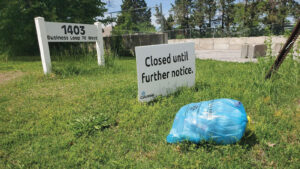The lack of affordable housing is this ongoing enigma.
Depending on who you talk to, it could be those greedy developers to blame or that dad-gum guv’ment. For lower-income working folks in town, all they know for sure is “the rent’s too (darn) high.”
From a demand side, a seemingly eternal influx of folks are wanting to move to COMO, to join up with the good thing we’ve got going here. With thriving professional industries like higher ed, medical, finance, and several unicorn-type startup companies, ours is an above-average income town overall.
More people, with strong purchasing power from well-paying, steady local jobs, can afford to bid up housing across the price spectrum. With a multigenerational trend of more households, living in bigger homes, ever more building materials are needed, pushing prices up.
From a supply side, land is constrained — as old-time farmers say: they aren’t making any more of it. COMO’s footprint has stretched the city limits, and our metro area is well beyond.
Now Hiring
Then there’s the lack of workers in the building trades. If it’s a challenge for restaurants and air-conditioned offices to keep staffed these days, it’s harder to fill openings for swinging a hammer out in the elements. Like Mike Rowe of “Dirty Jobs” fame, local industrial tech teacher Allen Sharrock is trying to raise awareness against a multi-decade tide that about everybody and their dog ought to aspire to a four-year college degree. Allen’s aim points to several types of careers to which a young person may aspire.
Builders, engineers, and the like are still needed desperately, but not many Americans are skilled to do so, and/or shy away from hard physical labor. No labor (or any other) market occurs in a vacuum, so many immigrants from our Latin American neighbors to the south find their way here to fill the void.
Many readers commonly observe around here roofers, building framers, and concrete pourers working out in burning hot or freezing cold conditions, from dawn to dusk. And many seem thrilled to be here, even with our country’s very outdated and inadequate immigration system.
A High Bar to Clear
In a prosperous, stable community, it is natural to desire high-quality housing for all people, so many rules establishing minimum standards have evolved, adding the latest new building standards over time. Nobody wants slums.
But all these rules, from international standards organizations — often routinely adopted by cities nationwide — continue to raise the bar (and the cost) for what is allowed to be built at all. In big cities and for wealthy buyers, they would probably build to high standards anyway, but for middle/lower income midwesterners, such a high hurdle means they can afford less house than otherwise.
Some residents are also rightly concerned about volatility in their established neighborhoods, particularly those with a historic feel. There is this ongoing trend that seems to slowly snowball over time, where long-time residents of well-established neighborhoods in our city center have become more vigilant over the specter of redevelopment next door — particularly around the periphery of the MU campus where many a college student would desire to live, so density naturally increases via remodeling and a heavy sprinkling of new bigger structures amongst single-family homes from the early/mid 20th century.
The latest attempt to put the kibosh on up-zoning in their backyards was a shocking proposal to halt such redevelopment activity in older areas for six months. This was not a new approved zoning code to enforce, nor a proposed new rule, nor rules in the works, nor a consultant report being pondered, nor a consultant selected, nor had a Request For Proposal been issued to solicit bids for a consultant to even start on new rule ideas.
This outrageous idea was shot down in an early May city council meeting with customary late-night brouhaha. Between the NIMBYs, realtors, and ideologues, it was — oddly enough — two local nonprofit groups who maybe swayed the council’s sympathies. Such a moratorium would stifle their active taxpayer-funded low-income housing efforts. You can’t make it up.
No DIY
There are volumes of commentary the pundit could saw on about, but it dawned on yours truly about my own childhood home.
My dad took a drafting class in high school and learned basic handyman skills from an uncle figure growing up. In the late ’70s, aspiring to upgrade his young family from a trailer home in Prathersville, he designed and built his own home on a three-acre lot in the Midway area. There are still faded DIY manuals and small home architectural magazines on a bookshelf — how to install kitchen cabinets and attach wood siding. Over evenings and weekends, friends and family pitched in, between subcontractors who did bulldozer work, poured concrete for the basement, and delivered building materials to the site.
In a telling sign of the times, he more recently had an idea to add on a primary bathroom to facilitate single-level living in retirement, but even the Boone County building inspection code required that he upgrade the whole house’s wiring and replace the perfectly functioning septic tank. Discouraged by this unexpected cost, you know what he did? Nothing. This house will therefore go unimproved, and his life worse off because of it.
Affordability Extinction
And that’s what’s been going on all over town for years — mystery solved.
No matter theorizing about the causes of unaffordable housing, the numbers don’t lie: according to the “Facts and Figures” booklet for 2023 from Regional Economic Development Inc (REDI), Columbia has the second highest housing costs in the state, only behind metro Kansas City which includes the affluent suburbs on the Kansas side.
As more people and more restrictions have amassed here over time, middle- and upper-income homebuyers quietly suck it up, while for lower-income, the sub-$100k bungalow in COMO has gone the way of the dodo bird. In a way, it now seems that low-income housing is generally illegal in Columbia, Missouri.

Steve Spellman is a lifelong Columbia-area resident and political observer.









